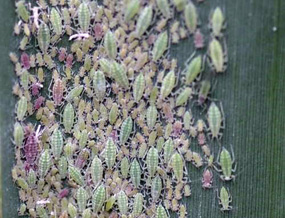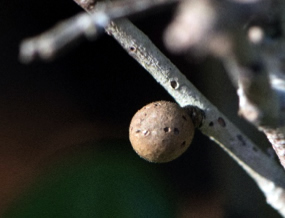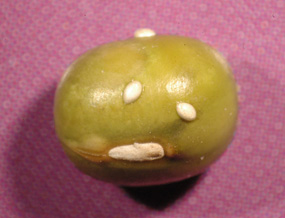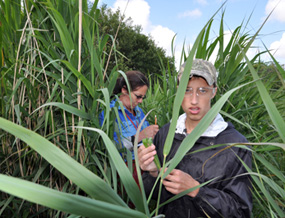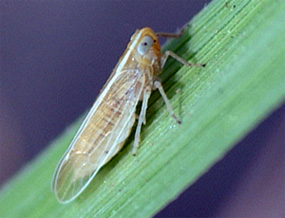PUBLICATIONS
Cronin, J. T. and J. D. Reeve. In review. Development time and host-parasitoid stability: An experimental test. Journal of Animal Ecology.
Johnston, J., R. Diaz, T. Elsey-Quirk and J. T. Cronin. In review. Competition and soil-microbe mediated interactions following the dieback of a dominant wetland plant. For Ecosphere.
Meyerson, L. A., J. T. Cronin, J. Packer, P. Pyšek, K. Saltonstall. 2025. Ecology and evolution of Phragmites australis, one of the world’s most successful plant species. Annual Review of Ecology, Evolution and Systematics. In press.
N. Fonseka, J. Goddard II, R. Shivaji and X. Xue. 2025. Effects of predation-induced emigration on a landscape ecological model. Axioms. https://doi.org/10.3390/axioms14010063.
Acharya, A., J. T. Cronin, N. Fonseka, J. Goddard II, A. Henderson, V. Munoz and R. Shivaji. 2024. A Σ-shaped bifurcation curve for a class of reaction diffusion equations and an application to an ecological model. Numerical Algebra, Control and Optimization. https://doi.org/10.3934/naco.2024051.
Glassmire, A., A. Salgado, J. Johnston, R. Diaz and J. T. Cronin. 2024. The effects of environmental stressors on above- and below-ground phytochemical diversity of a threatened wetland grass. Plants. https://doi.org/10.3390/plants13223133.
Elsey-Quirk, T., A. Lynn, M. D. Jacobs, R. Diaz, J. T. Cronin, L. Wang, H. Huang, and D. Justic. 2024. Vegetation die-off in the Mississippi River Delta triggered by acute drought and chronic relative sea-level rise. Nature Communications. https://doi.org/10.1038/s41467-024-47828-x.
Meyerson, L. A., J. T. Cronin, M. Lučanová, C. Lambertini, J. G. Packer, J. Čuda, J. Wild, J. Pergl and P. Pyšek. 2024. Some like it hot: small genomes are more prevalent under climate extremes. Invasion Biology. 26: 1425-1436.
Lee, H., R. Diaz and J. T. Cronin. 2024. Dieback and dredge soils of Phragmites australis in the Mississippi River Delta negatively impact plant biomass. Scientific Reports. https://doi.org/10.1038/s41598-024-52488-4.
Cronin J. T., J. Goddard, A. Muthunayake, J. Quiroa and R. Shivaji. 2024. Predator-induced prey dispersal can cause hump-shaped density-area relationships in prey populations. Journal of Mathematical Biology. https://doi.org/10.1007/s00285-023-02040-1.
Cronin, J. T., J. Goddard II, A. Krivchenia and R. Shivaji. 2023. Density dependent within-patch movement behavior of two competing species. Evolution and Ecology. https://DOI.org/10.1002/ece3.10753.
Lee, H., R. Diaz, J. Johnston, I. A. Knight, J. A. Nyman and J. T. Cronin. 2023. Vegetation restoration following dieback of Phragmites australis in the Mississippi River Delta, USA. Wetlands: https://doi.org/10.1007/s13157-023-01746-8.
Salgado, A. L., A. E. Glassmire, B. E. Sedio, R. Diaz, M. J. Stout, J. Čuda, P. Pyšek, L. A. Meyerson and J. T. Cronin. 2023. Metabolomic Evenness Underlies Intraspecific Differences Among Lineages of a Wetland Grass. Journal of Chemical Ecology 49: 437-450.
Lindsay, D. L., X. Guan, N. E. Harms, J. T. Cronin, L. A. Meyerson and R. F. Lance. 2023. DNA markers for the in-field genetic discrimination of three Phragmites australis (Poaceae: Arundinoideae) subspecies. Applications in Plant Sciences. https://doi.org/10.1002/aps3.11512.
Acharya, A., S. Bandyopadhyay, J. T. Cronin, J. Goddard, A. Muthunayake and R. Shivaji. 2023. The diffusive Lotka-Volterra competition model in fragmented patches I: Coexistence. Journal of Mathematical Biology. https://doi.org/10.1016/j.nonrwa.2022.103775.
Goddard II, J., R. Shivaji and J. T. Cronin. 2022. Ecological release and patch geometry can cause nonlinear density-area relationships. Journal of Theoretical Biology: https://doi.org/10.1016/j.jtbi.2022.111325.
Harms, N. E., J. T. Cronin and J. Gaskin. 2021. Increased ploidy of Butomus umbellatus L. in introduced populations is not associated with higher phenotypic plasticity to N and P. AoB Plants 13: https://doi.org/10.1093/aobpla/plab045.
Harms, N. E., J. T. Cronin and J. Gaskin. 2021. Increased ploidy of Butomus umbellatus L. in introduced populations is not associated with higher phenotypic plasticity to N and P. AoB Plants 13: https://doi.org/10.1093/aobpla/plab045.
Harms, N. E. and J. T. Cronin. 2021. Phenology and competitive interactions and implications for management of the invasive wetland plant, Alternanthera philoxeroides. ERDC Technical Notes, ERDC/EL TN-21-1. Vicksburg, MS: US Army Corps of Engineer Research and Development Center.
Meyerson, L. A., P. Pyšek, M. Lučanová, S. Wigginton, C.-T. Tran and J. T. Cronin. 2020. Size matters: Plant genome size influences abiotic stress tolerance in native versus invasive plants. Bulletin of the Ecological Society of America. https://doi.org/10.1002/bes2.1731.
Harms, N. E. and J. T. Cronin. 2020. Biological control agent attack timing and population variability, but not density, best explain host density across a latitudinal gradient. Scientific Reports https://doi.org/10.1038/s41598-020-68108-w.
Harms, N. E., J. T. Cronin, R. Diaz and R. Winston. 2020. A review of causes and consequences of geographical variability in weed biological control success. Biological Control https://doi.org/10.1016/j.biocontrol.2020.104398.
Cronin, J. T., J. Johnston and R. Diaz. 2020. Multiple potential stressors and dieback of Phragmites australis in the Mississippi River Delta, U.S.A. Wetlands 40: 2247-2261.
Cronin, J. T., J. Goddard II, A. Muthunayake and R. Shivaji. 2020. Modeling the effects of trait-mediated dispersal on coexistence of mutualists. Mathematical Biosciences and Engineering 17: 7838-7861.
Croy J. R., W. J. Allen, L. A. Meyerson and J. T. Cronin. 2020. Lineage and latitudinal variation in Phragmites australis tolerance to herbivory: Implications for invasion success. Oikos 129: 1341-1357.
Allen, W. J., A. E. DeVries, N. J. Bologna, W. A. Bickford, K. P. Kowalski, L. A. Meyerson and J. T. Cronin. 2020. Intraspecific and biogeographic variation in foliar fungi communities and pathogen damage: implications for invasion success. Global Ecology and Biogeography. 29: 1199-1211.
Knight, I. A., J. T. Cronin, M. Gill, J. A. Nyman, B. E. Wilson, and R. Diaz. 2020. The role of plant phenotype, salinity, and infestation by the Roseau Cane Scale in the die-back of Phragmites australis in the Mississippi River Delta, Louisiana, USA. Wetlands 40: 1327-1337.
Meyerson, L, P. Pyšek, M. Lučanová, S. Wigginton, C.-T. Tran and J. T. Cronin. 2020. Plant genome size influences stress tolerance of invasive and native plants via plasticity. Ecosphere 11: Article e03145.
Cronin, J. T., G. Melika and W. G. Abrahamson. 2020. Time-since fire and cynipid gall wasp assemblages on oaks. Biodiversity and Conservation https://doi.org/10.1007/s10531-020-01930-w.
Harms, N., J. Shearer, J. T. Cronin and J. Gaskin. 2020. Geographic and genetic variation in biotic resistance of the invasive wetland plant, Butomus umbellatus in the United States. Biological Invasions 22: 535-548.
Harman, R. R., J. Goddard II, R. Shivaji and J. T. Cronin. 2020. Diverse forms of density-dependent emigration and their population-dynamic consequences. American Naturalist 195: 851-867.
Cronin, J. T., N. Fonseka, J. Goddard, J. Leonard and R. Shivaji. 2019. Modeling the effects of density dependent emigration, weak Allee effects, and matrix hostility on patch-level population persistence. Mathematical Biosciences and Engineering 17: 1718-1742.
Cronin, J. T., J. Goddard II and R. Shivaji. 2019. Effects of patch-matrix composition and individual movement response on population persistence at the patch level. Bulletin of Mathematical Biology https://doi.org/10.1007/s11538-019-00634-9.
Harms, N. and J. T. Cronin. 2019. Variability in weed biological control: effects of foliar nitrogen on larval development and dispersal of the alligatorweed flea beetle, Agasicles hygrophila. Biocontrol 135: 16-22.
Kiviat, E., L. A. Meyerson, T. J. Mozdzer, W. J. Allen, A. H. Baldwin, G. P. Bhattarai, H. Brix, J. S. Caplan, K. M. Kettenring, C. Lambertini, J. Weis, D. F. Whigham and J. T. Cronin. 2019. Evidence does not support the targeting of cryptic invaders at the subspecies level using classical biological control. Biological Invasions 21: 2529-2541.
Knight, I. A., B. E. Wilson, M. Gill, L. Aveles, J. T. Cronin, J. A. Nyman, S. A. Schneider and R. Diaz. 2018. Invasion of Nipponaclerda biwakoensis (Hemiptera: Aclerdidae) and associated Phragmites australis dieback in southern Louisiana, U.S.A. Biological Invasions 20: 2739-2744.
Allen, W. J., L. A. Meyerson, A. J. Flick and J. T. Cronin. 2018. Intraspecific variation in indirect plant-soil feedbacks as a driver of a wetland plant invasion. Ecology 99: 1430-1440.
Bowen, J. L., P. J. Kearns, J. E. K. Byrnes, S. Wigginton, W. J. Allen, M. Greenwood, K. Tran, J. Yu, J. T. Cronin, and L. A. Meyerson. 2018. Why do invasive species do so well? Environmental Science Journal for Teens. January 2018:1-5.
Eller, F., B. K. Sorrell, C. Lambertini, D. Whigham, E. Hazelton, H. Skálová, H. Brix, J. T. Cronin, J. S. Caplan, K. Kettenring, L. A. Meyerson, M. Burger, M. McCormick, P. Pyšek, T. Mozdzer, W.-Y. Guo, X. Guo, G. P. Bhattarai. 2017. Cosmopolitan species as ecophysiological models for responses to global change: the common reed Phragmites australis. Frontiers in Plant Science. doi.org/10.3389/fpls.2017.01833.
Bowen, J. L., P. J. Kearns, J. E. K. Byrnes, S. Wigginton, W. J. Allen, M. Greenwood, K. Tran, J. Yu, J. T. Cronin and L. A. Meyerson. 2017. Lineage overwhelms environmental conditions in determining rhizosphere bacterial community structure in a cosmopolitan invasive plant. Nature Communications 8: 433 (10.1038/s41467-017-00626-0).
Allen, W. P., L. A. Meyerson, D. Cummings, J. Anderson, G. P. Bhattarai, and J. T. Cronin. 2017. Biogeography of a plant invasion: drivers of latitudinal variation in enemy release. Global Ecology and Biogeography 26: 435-446.
Packer J. P., L. A. Meyerson, D. M. Richardson, G. Giuseppe Brundu, W. Allen, G. P. Bhattarai, H. Brix, S. Canavan, S. Castiglione, A. Cicatelli, J. Čuda, J. T. Cronin, F. Eller, F. Guarion, W. W.-H. Guo, W.-Y. Guo, X. Guo, J. Hierro, C. Lambertini, J. Liu, V. Lozano, T. J. Mozdzer, H. Skálová, D. Villarreal, R. Wang and P. Pyšek. 2017. Global networks for invasion science: benefits, challenges and guidelines. Biological Invasions 19: 1081-1096.
Bhattarai, G. P., L. A. Meyerson and J. T. Cronin. 2017. Geographic variation in apparent competition between native and invasive Phragmites australis. Ecology 98: 349-358.
Bhattarai, G. P., L. A. Meyerson, J. Anderson, D. Cummings, W. J. Allen and J. T. Cronin. 2017. The biogeography of a plant invasion: Genetic variation and phenotypic plasticity in latitudinal clines for plant-herbivore interaction traits. Ecological Monographs 87: 57-75.
Bhattarai, G. P., W. J. Allen, J. T. Cronin, E. Kiviat and L. A. Meyerson. 2016. Response to Blossey and Casagrande - Ecological and evolutionary processes make host specificity at the subspecies level exceedingly unlikely. Biological Invasions 18(9): 2757-2758.
Meyerson, L. A., J. T. Cronin, G. P. Bhattarai, H. Brix, C. Lambertini, M. Lučanová, S. Rinehart, J. Suda and P. Pyšek. 2016. Do ploidy level and nuclear genome size and latitude of origin modify the expression of Phragmites australis traits and interactions with herbivores? Biological Invasions 18(9): 2531-2549.
Meyerson, L. A., J. T. Cronin and P. Pyšek. 2016. Phragmites australis as a model organism for studying plant invasions. Biological Invasions 18(9)2421-2431.
Cronin, J. T., J. D. Reeve, D. Xu, M. Xiao and H. N. Stevens. 2016. Variable prey development time suppresses predator-prey cycles and enhances stability. Ecology Letters 19:318-327.
Cronin, J. T., E. Kiviat, L. A. Meyerson, G. P. Bhattarai and W. J. Allen. 2016. Biological control of invasive Phragmites australis will be detrimental to native P. australis. Biological Invasions 18(9):2749-2752
Allen, W. J., R. Young, G. P. Bhattarai, J. Croy, L. A. Meyerson, A. Lambert and J. T. Cronin. 2015. Multitrophic enemy escape of invasive Phragmites australis and its introduced herbivores in North America. Biological Invasions 17: 3419-3432.
Cronin, J. T., L. A. Meyerson, G. Bhattarai and W. Allen. 2015. Biogeography of a plant invasion: plant-herbivore interactions. Ecology 96: 1115-1127.
Bhattarai, G. P. and J. T. Cronin. 2014. Hurricane activity and the large-scale pattern of spread of an invasive plant species. PLoS One 9(5): e98478. DOI: 10.1371/journal/pone.0098478.
Cronin, J. T and J. D. Reeve. 2014. An integrative approach to understanding host-parasitoid population dynamics in real landscapes. Basic and Applied Ecology 15: 101-113.
Bezemer, T. M, J. A. Harvey, and J. T. Cronin. 2014. Response of native insect communities to invasive plants. Annual Review of Entomology 59: 119-141.
Jackson, H. B., A. Zeccarias and J. T. Cronin. 2013. Mechanisms driving the density-area relationship in a saproxylic beetle. Oecologia 173: 1237-1247.
Meyerson, L. A. and J. T. Cronin. 2013. Evidence for multiple introductions of Phragmites australis to North America: detection of a new non-native haplotype. Biological Invasions. 12:2605-2608.
Xiao, M., J. D. Reeve, D. Xu and J. T. Cronin. 2013. Estimation of the diffusion rate and crossing probability for biased edge movement between two different types of habitat. Journal of Mathematical Biology 41(3): 551-561.
Jackson, H. B., K. Baum, A. Zeccarias* and J. T. Cronin. 2012. From logs to landscapes: Determining the scale of ecological processes affecting the incidence of a saproxylic beetle. Ecological Entomology 37: 233-243.
Accamando, A. K. and J. T. Cronin. 2012. Costs and benefits of jasmonic acid induced responses in soybean.Environmental Entomology 41: 551-561.
Hakes, A. S. and J. T. Cronin. 2012. Successional change in plant resistance and tolerance to herbivory. Ecology 93: 1059-1070.
Hakes, A. S. and J. T. Cronin. 2011. Resistance and tolerance to herbivory in Solidago altissima (Asteraceae): genetic variability, costs and selection for multiple traits.American Journal of Botany 98: 1446-1455.
Cronin, J. T. 2011. Spatial ecology of the palm-leaf skeletonizer, Homaledra sabalella (Lepidoptera: Coleophoridae). PLoS One 6(7): e22331. doi: 10.1371/journal.pone.0022331
Hakes, A. S. and J. T. Cronin. 2011. Environmental heterogeneity and spatiotemporal variability in plant defense traits. Oikos 120: 452-462.
Reeve, J. D. and J. T. Cronin. 2010. Edge behavior in a minute parasitic wasp. Journal of Animal Ecology 79: 483-490.
Jackson, H. B., K. A. Baum, T. Roberts and J. T. Cronin. 2009. Habitat-specific movement and edge-mediated behaviour of a saproxylic insect, Odontotaenius disjunctus Illiger (Coleoptera: Passalidae). Environmental Entomology 38: 1411-1422.
Dillemuth, F. D., E. Rietschier and J. T. Cronin. 2009. Patch dynamics of a native grass in relation to the spread of invasive smooth brome (Bromus inermis). Biological invasions 11: 1381-1391.
Cronin, J. T. 2009. Movement, colonization and establishment success of a planthopper of prairie potholes, Delphacodes scolochloa (Hemiptera: Delphacidae). Ecological Entomology 34: 114-124.
Cronin, J. T. 2009. Habitat edges, within-patch dispersion of hosts, and parasitoid oviposition behavior. Ecology 90: 196-207.
Rosso, P. H., J. T. Cronin and R. D. Stevens. 2008. Monitoring the invasion of Phragmites australis in coastal marshes of Louisiana, USA, using multi-source remote sensing data. Remote Sensing for Environmental Monitoring, GIS Applications and Geology. VIII. Proceeding of SPIE. Michel, U., D. L. Civco, M. Ehlers and H. J. Kaufmann, Eds. The International Society of Optical Engineering, Bellingham, WA.
Reeve, J. D., K. J. Haynes and J. T. Cronin. 2008. Diffusion models for animals in complex landscapes: incorporating heterogeneity among substrates, individuals and edge behaviors Journal of Animal Ecology 77: 898-904.
Cronin, J. T. 2007. From population sources to sieves: the matrix alters host-parasitoid source-sink structure. Ecology 88: 2966-2976.
Cronin, J. T. 2007. Shared parasitoids in a metacommunity: indirect interactions inhibit herbivore membership in local communities. Ecology 88: 2977-2990.
Cronin, J. T. and S. W. Wilson. 2007. Description, life history, and parasitism of a new species of delphacid planthopper (Hemiptera: Fulgoroidea). Annals of the Entomological Society of America 100: 640-648.
Henne, D. C., S. J. Johnson and J. T. Cronin. 2007. Population spread of the introduced red-imported fire ant parasitoid, Pseudacteon tricuspis Borgmeier (Diptera: Phoridae), in Louisiana. Biological Control 42: 97-104.
Haynes, K. J., F. Dillemuth, B. Anderson*, A. Hakes, H. B. Jackson, and J. T. Cronin. 2007. Landscape context outweighs local habitat quality in its effects on herbivore dispersal and distribution. Oecologia 151:431-441.
Hofstetter, R. W., J. T. Cronin, K. D. Klepzig, M. P. Ayres and J. C. Moser. 2006. Antagonisms, mutualisms and commensalisms affect outbreak dynamics of the southern pine beetle. Oecologia 147: 679-691.
Haynes, K. J. and J. T. Cronin. 2006. Interpatch movement and edge effects: the role of behavioral responses to the landscape matrix. Oikos 113: 43-54.
Cronin, J. T. and J. D. Reeve. 2005. Host-parasitoid spatial ecology: a plea for a landscape-level synthesis. Proceedings of the Royal Society of London Series B-Biological Sciences 272: 2225-2235.
Baum, K., K. J. Haynes, F. P. Dillemuth and J. T. Cronin. 2004. The matrix enhances the effectiveness of corridors and stepping stones. Ecology 85: 2671-2676.
Cronin, J. T. and K. J. Haynes. 2004. Invasive plants promote unstable host-parasitoid patch dynamics. Ecology 85: 2772-2782.
Willliams, M.A. and J.T. Cronin. 2004. Gall former guild response to stressed and vigorous roses. Environmental Entomology 33:1052-1061.
Cronin, J. T., K. J. Haynes and F. Dillemuth. 2004. Spider effects on planthopper mortality, dispersal, and spatial population dynamics. Ecology 85: 2134-2143.
Cronin, J. T. 2004. Host-parasitoid extinction and colonization in a fragmented prairie landscape. Oecologia 139: 503-514.
Haynes, K. J. and J. T. Cronin. 2004. Patch quality is too often ignored in landscape-matrix studies. Landscape Ecology 19: 119-124.
Haynes, K. J. and J. T. Cronin. 2003. Matrix composition affects the spatial ecology of a prairie planthopper. Ecology 84: 2856-2866.
Nathan, R. M., G. Perry, J.T. Cronin, A.E. Strand and M.L. Cain. 2003. Methods for estimating long-distance dispersal. Oikos 103: 261-273.
Cronin, J. T. 2003. Matrix heterogeneity and planthopper-parasitoid interactions in space. Ecology 84: 1506-1516.
Cronin, J. T. 2003. Patch structure, oviposition behavior and the distribution of parasitism risk. Ecological Monographs 73: 283-300.
Cronin, J. T. 2003. Movement and spatial population structure of a prairie planthopper. Ecology 84: 1179-1188.
Smith, P. T., K. Krager, J. T. Cronin and S. Kambhampati. 2002. Mitochondrial DNA variation among host races of Eurosta solidaginis Fitch (Diptera: Tephritidae). Molecular Phylogenetics and Evolution 25: 372-376.
Poff, A.C., K. Haynes, M. Szymanski, D. Back, M.A. Williams, and J.T. Cronin. 2002. Bird predation and the host-plant shift by the goldenrod stem galler, Eurosta solidaginis (Diptera: Tephritidae). Canadian Entomologist 134: 215-228.
Cronin, J. T. and W. G. Abrahamson. 2001. Do parasitoids diversify in response to host-plant shifts by herbivorous insects? Ecological Entomology 26: 347-355.
Cronin, J. T., W. G. Abrahamson and T.P. Craig. 2001. Temporal variation in host-plant preference and offspring performance: constraints on host-plant specialization. Oikos 93: 312-320.
Cronin, J. T. and W. G. Abrahamson. 2001. Goldenrod stem galler preference and performance: effects of multiple herbivores and plant genotypes. Oecologia 127: 87-96.
Cronin, J. T., K. Hyland and W. G. Abrahamson. 2001. The pattern, rate, and range of within-patch movement of a stem-galling fly. Ecological Entomology 26: 16-24.
Cronin, J. T., J. D. Reeve, R. Wilkins and P. Turchin. 2000. The pattern and range of movement of a checkered-beetle predator relative to its bark-beetle prey. Oikos 90: 127-138.
Cronin, J. T., J. L. Hayes and P. Turchin. 2000. Evaluation of traps used to monitor southern pine beetle populations. Agricultural and Forest Entomology 2: 69-76.
Cronin, J. T. and W. G. Abrahamson. 1999. Host-plant genotype and other herbivores influence goldenrod stem galler preference and performance. Oecologia 121: 392-404.
Cronin, J. T. and D. R. Strong. 1999. Dispersal-dependent oviposition and population dynamics of a host and parasitoid. American Naturalist 154: 23-36.
Cronin, J. T., P. Turchin, J. L. Hayes and C. A. Steiner. 1999. Area-wide efficacy of a localized forest pest management practice. Environmental Entomology 28: 496-504.
Turchin, P., R. Wilkens, J. T. Cronin and J. D. Reeve. 1998. An empirically-based model for understanding spatial pattern formation in a bark beetle system. Pp. 199-213 in "Modelling Spatiotemporal Dynamics in Ecology", J. Bascompte and R. V. Sole (Eds.). Academic Press, NY.
Cronin, J. T. & D. R. Strong. 1996. Genetics of oviposition success of a fairyfly parasitoid. Heredity 76: 43-54.
Rossi, A. M., J. D. Reeve and J. T. Cronin. 1994. The effects of plant induced egg mortality on the interspecific distribution of the oligophagous leafhopper Carneocephala floridana. Oecologia 100: 89-93.
Reeve, J. D., J. T. Cronin and D. R. Strong. 1994. Parasitism and generation cycles in a salt-marsh planthopper. Journal of Animal Ecology 63: 912-920.
Reeve, J. D., J. T. Cronin and D. R. Strong. 1994. Parasitoid aggregation and the stabilization of a salt-marsh host-parasitoid system. Ecology 75: 288-295.
Cronin, J. T. & D. R. Strong. 1993. Superparasitism and mutual interference in the fairyfly parasitoid Anagrus delicatus. Ecological Entomology 18: 293-302.
Cronin, J. T. & D. R. Strong. 1993. Parasitoid interactions and their contribution to the stabilization of Auchenorrhyncha populations. Pp. 400-428 in "Planthoppers: Their Ecology and Management", R. F. Denno & T. J. Perfect, Eds. Chapman & Hall Publ., New York.
Cronin, J. T. & D. R. Strong. 1993. Substantially submaximal oviposition rates by a mymarid egg parasitoid in the laboratory and field. Ecology 74: 1813-1825.
Cronin, J. T. & D. R. Strong. 1990. Density-independent parasitism among host patches by Anagrus delicatus (Hymenoptera: Mymaridae): experimental manipulation of hosts. Journal of Animal Ecology 59: 1019-1026.
Cronin, J. T. & D. R. Strong. 1990. Biology of Anagrus delicatus (Hymenoptera: Mymaridae), an egg parasitoid of Prokelisia marginata (Homoptera: Delphacidae). Annals of the Entomological Society of America 83: 846-854.
Cronin, J. T. 1989. Inverse density-dependent parasitism of the evergreen bagworm (Lepidoptera: Psychidae). Environmental Entomology 18: 403-407.
Cronin, J. T. & D. E. Gill. 1989. The influence of host distribution, sex, and size on the level of parasitism by Itoplectis conquisitor (Say). Ecological Entomology 14: 159-172.
Deyrup, M., F., J. T. Cronin, & F. Kurczewski. 1988. Allochares azureus: an unusual wasp seeks unusual prey (Hymenoptera: Pompilidae; Arachnida: Filistatidae). Psyche 95: 265-281.
Cronin, J. T. & J. Travis. 1986. Size-limited predation on larval Rana areolata (Anura: Ranidae) by two species of backswimmer (Insecta: Hemiptera: Notonectidae). Herpetologica 42: 171-174.
